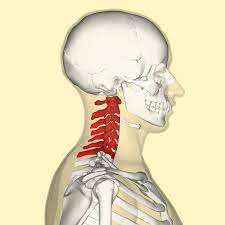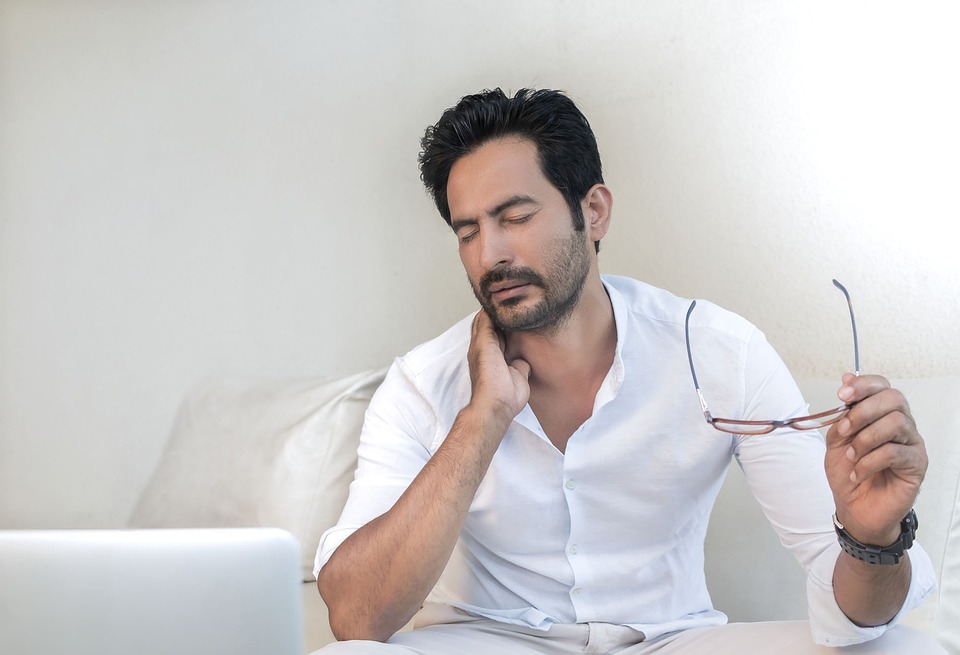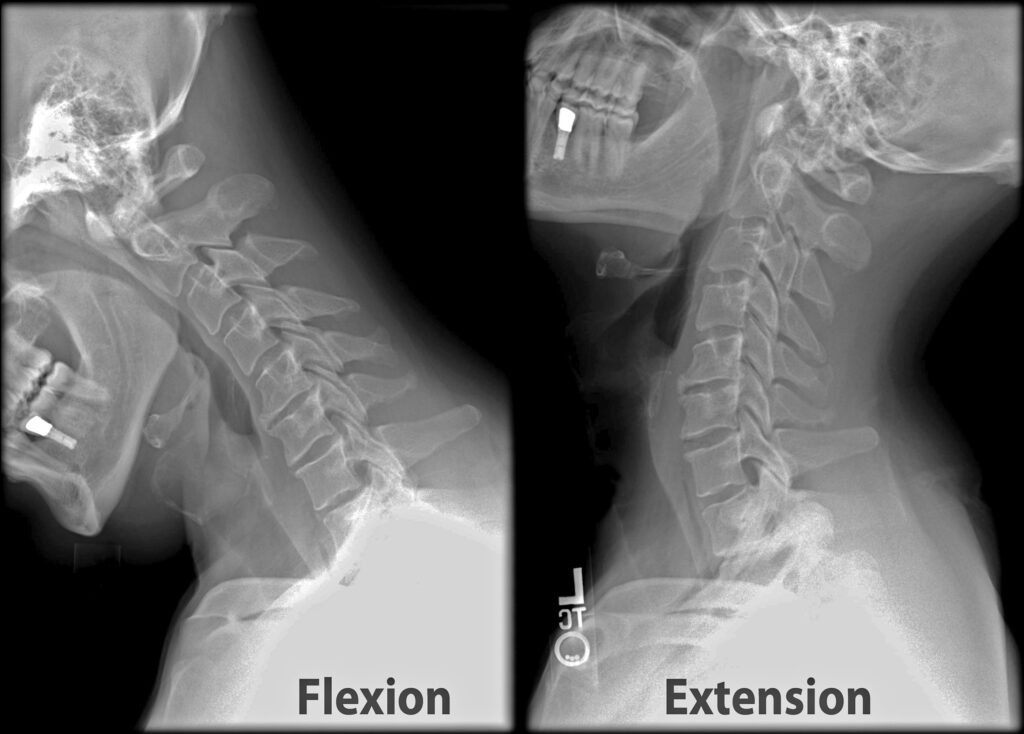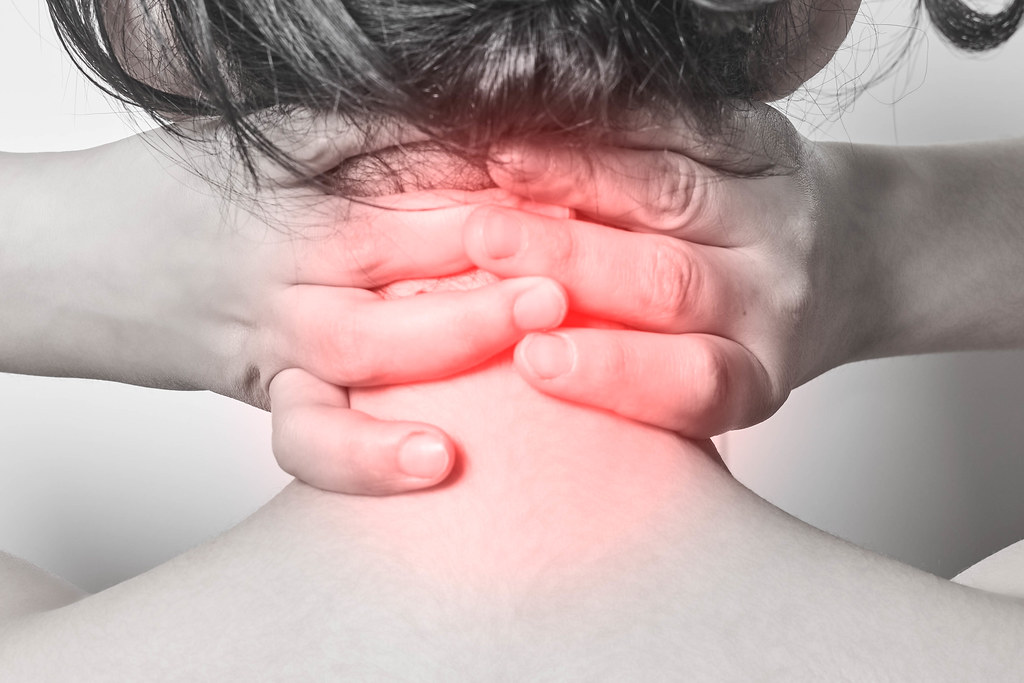Introduction
Cervical pain can be caused by a variety of factors, including injury, poor posture, and certain medical conditions. In this article, we will discuss the anatomy of the cervical spine, the definition of cervical pain, and various management options for those who are suffering from cervical pain.

The cervical spine, also known as the neck, is made up of seven vertebrae and is the topmost part of the spine. The cervical spine is responsible for supporting the head and allowing for the range of motion of the head and neck. The cervical spine is also home to the spinal cord, which carries nerve impulses to and from the brain.
Definition
Cervical pain is defined as discomfort or pain that occurs in the cervical spine. This pain can be sharp or dull and can be accompanied by stiffness or a limited range of motion. Cervical pain can be caused by a variety of factors, including injury, poor posture, and certain medical conditions.
Symptoms
Cervical pain, or pain in the neck, can present in a variety of ways. Common symptoms include:
- Neck pain: This can range from a dull ache to a sharp pain. It may be felt on one side of the neck or on both sides.

- Headaches: Cervical pain can often cause headaches, which may be felt at the base of the skull or radiating up towards the forehead.
- Stiffness: The neck may feel stiff or difficult to move, particularly in the morning or after prolonged periods of inactivity.
- Numbness or tingling: Some people with cervical pain may experience numbness or tingling in the shoulders, arms, or hands.
- Weakness: The neck muscles may feel weak or fatigued, making it difficult to hold the head up or perform certain activities.
- Radiating pain: The pain may radiate down the arm towards the elbow or hand.
Cervical pain can be caused by a variety of factors, such as poor posture, muscle strain, or a degenerative condition such as osteoarthritis. It is important to seek medical attention if you are experiencing chronic or severe cervical pain, as early diagnosis and treatment can help to prevent further complications and improve your overall quality of life.
Read about cervical vertebrae here !
Causes
One of the most common causes of cervical pain is injury. This can include whiplash, which occurs when the head is suddenly jerked forward or backward, and neck strains, which are caused by overuse or overexertion. Poor posture is also a common cause of cervical pain. Sitting or standing for long periods of time with poor posture can lead to strain on the cervical spine and result in pain.

Cervical pain, or pain in the neck, can be caused by a variety of factors. Some of the common causes are:
- Muscle strain: Overuse or over-extension of the neck muscles can lead to muscle strain, resulting in pain and stiffness. This can be caused by poor posture, carrying heavy bags or backpacks, or performing repetitive motions such as typing or playing musical instruments.
- Injuries: Trauma to the neck, such as a car accident or sports injury, can cause damage to the bones, ligaments, or muscles, leading to pain and stiffness.
- Degenerative conditions: As we age, our bodies may develop degenerative conditions such as osteoarthritis or cervical spondylosis, which can cause pain and stiffness in the neck. These conditions result from the wear and tear of the bones, ligaments and joints
- Herniated disc: The cervical spine is made up of a series of small bones called vertebrae, which are separated by cushions called discs. These discs act as shock absorbers, helping to absorb the impact of movement. If a disc becomes herniated, it can bulge out and press against the nerves, causing pain and numbness in the neck and arms.
- Rheumatoid arthritis: This is a chronic autoimmune disorder that can cause inflammation and pain in the joints, including the neck.
- Fibromyalgia: This is a chronic pain condition that can cause widespread pain and tenderness in the muscles and soft tissues, including the neck.
- Poor posture: Sitting or standing in a poor posture for long periods of time can put unnecessary stress on the neck and upper back muscles, leading to pain and stiffness.
- Stress: Stress can cause tension in the muscles of the neck and upper back, leading to pain and stiffness.
- Poor sleeping habits: Sleeping on your stomach or with a pillow that doesn’t support the natural curve of your neck can lead to pain and stiffness.
It is important to note that cervical pain can also be a symptom of a more serious underlying condition such as cancer, infection, or a nerve disorder. If you are experiencing chronic or severe cervical pain, it is important to seek medical attention to rule out any underlying conditions.

Treatment for cervical pain will vary depending on the underlying cause, but may include physical therapy, medication, or surgery. Physical therapy can help to reduce pain and inflammation, improve range of motion and flexibility, and increase strength and stability in the neck. Medications such as nonsteroidal anti-inflammatory drugs (NSAIDs) can help to reduce pain and inflammation, while corticosteroid injections may be used to reduce inflammation in specific areas. Surgery may be recommended in severe cases, such as when there is nerve compression or a herniated disc.
Preventing cervical pain can be done by maintaining good posture, exercise regularly, use proper ergonomics, take care of your neck while sleeping, and seek medical attention if you have chronic pain.
In conclusion, cervical pain is a common condition that can be caused by a variety of factors, including muscle strain, injuries, degenerative conditions, poor posture, stress and poor sleeping habits. It is important to seek medical attention if you are experiencing chronic or severe cervical pain, as early diagnosis and treatment can help to prevent further complications and improve your overall quality of life.
Certain medical conditions can also cause cervical pain. These include herniated discs, osteoarthritis, and rheumatoid arthritis. In addition, certain neurological conditions, such as multiple sclerosis and neuropathy, can also cause cervical pain.
Diagnosis
Cervical pain, or pain in the neck, can have a variety of causes. In order to properly diagnose cervical pain, a healthcare professional will typically start by taking a thorough medical history and conducting a physical examination. This may include an evaluation of the range of motion in the neck, as well as any muscle weakness or numbness in the shoulders, arms, or hands.
Imaging tests, such as X-rays, CT scans, or MRIs, may also be used to help diagnose cervical pain. These tests can help to identify any structural problems in the neck, such as a herniated disk or a bone spur, which could be causing the pain.

In addition to these tests, a healthcare professional may also order certain blood tests or nerve conduction studies to help rule out other potential causes of cervical pain, such as an infection or a nerve disorder.
Once the underlying cause of this condition has been identified, a treatment plan can be developed. This may include medications to reduce pain and inflammation, physical therapy to improve strength and flexibility in the neck, or even surgery in some cases.
It is important to seek medical attention if you are experiencing chronic or severe cervical pain, as early diagnosis and treatment can help to prevent further complications and improve your overall quality of life.
Treatment
There are a variety of treatment options available for those who are suffering from cervical pain. The first step in managing cervical pain is to identify the cause of the pain. Once the cause has been identified, a treatment plan can be developed.
Physical therapy is often recommended for the management of this condition. Physical therapy can help to improve range of motion and strength in the cervical spine, which can help to reduce pain. In addition, physical therapy can help to improve posture and teach patients how to move in a way that will reduce strain on the cervical spine.

Medications can also be used to manage cervical pain. In addition, prescription pain medications, such as muscle relaxants and antidepressants, can also be used to manage cervical pain.
In some cases, surgery may be necessary to manage cervical pain. Surgery may be recommended if the pain is caused by a herniated disc or other structural problem in the cervical spine. Surgery can help to alleviate pain and improve range of motion.
In conclusion, cervical pain is a common problem that affects many people. It can be caused by a variety of factors, including injury, poor posture, and certain medical conditions. The anatomy of the cervical spine, the definition of cervical pain, and various management options have been discussed in this article. It’s important to seek the help of a healthcare professional if you are experiencing this condition in order to develop an appropriate treatment plan.
In summary, Cervical pain, also known as neck pain, is a common problem that affects many people. It can be caused by a variety of factors including injury, poor posture, and certain medical conditions. Cervical pain can be sharp or dull and can be accompanied by stiffness or a limited range of motion. The cervical spine is made up of seven vertebrae and is the topmost part of the spine, it supports the head and allows for the range of motion of the head and neck, it also home to the spinal cord which carries nerve impulses to and from the brain.
Cervical pain can be caused by a variety of factors, including injury, poor posture, and certain medical conditions. Injuries such as whiplash and neck strains are common causes of cervical pain, as well as poor posture that can lead to strain on the cervical spine. Certain medical conditions such as herniated discs, osteoarthritis, and rheumatoid arthritis can also cause cervical pain.
Treatment options for this condition are varied and depend on the cause of the pain. Physical therapy can help to improve range of motion and strength in the cervical spine, which can help to reduce pain. Medications such as over-the-counter pain relievers and prescription pain medication can also be used to manage cervical pain. In some cases, surgery may be necessary to manage cervical pain.
It’s important to seek the help of a healthcare professional if you are experiencing this condition in order to develop an appropriate treatment plan. The healthcare professional will take a history and perform a physical examination, after that they may order imaging studies such as X-ray, CT or MRI to evaluate the cervical spine. Once the cause of cervical pain is identified, treatment can be tailored to the individual patient.
In summary, cervical pain is a common problem that can be caused by a variety of factors, it’s important to seek the help of a healthcare professional to identify the cause of the pain and develop an appropriate treatment plan. Physical therapy, medication, and surgery can all be used to manage cervical pain.
Treatment with Physical Therapy
Physical therapy is a common treatment option for cervical pain, or pain in the neck. It can help to reduce pain and inflammation, improve range of motion and flexibility, and increase strength and stability in the neck.
A physical therapist will typically start by conducting a thorough evaluation of your neck and upper back. They will assess your range of motion, muscle strength, and overall function. Based on this evaluation, the therapist will develop a treatment plan specifically tailored to your needs.

The treatment plan may include a variety of techniques, such as:
- Gentle range of motion exercises to help increase flexibility and decrease stiffness in the neck.
- Strengthening exercises to help build up the muscles that support the neck.
- Stretching exercises to help reduce tension in the muscles of the neck and upper back.
- Manual therapy, such as massage and mobilization, to help relieve pain and improve mobility.
- In addition to these specific techniques, the physical therapist may also provide education on proper posture, body mechanics, and ergonomics to help prevent future episodes of this condition.
Physical therapy is a safe and effective treatment option for this condition. It can help to reduce pain and improve function, allowing you to return to your normal daily activities. It is essential to work closely with a physical therapist, who can guide you through the treatment process and make adjustments as needed to ensure that you are getting the most benefit from the therapy.
Prevention of Cervical pain
Cervical pain, or pain in the neck, can be caused by a variety of factors, such as poor posture, muscle strain, or a degenerative condition such as osteoarthritis. However, there are several steps you can take to help prevent cervical pain and reduce your risk of developing it.
- Maintain good posture: Sitting or standing in a poor posture for long periods of time can put unnecessary stress on the neck and upper back muscles. Make sure to sit and stand with a straight spine, your shoulders back, and your head held high.
- Exercise regularly: Regular exercise can help to strengthen the muscles that support the neck, reducing the risk of injury and muscle strain. Cardiovascular exercise, such as walking or cycling, as well as strength training exercises such as weightlifting, can be beneficial.
- Use proper ergonomics: When working at a computer or performing other activities that require prolonged sitting or standing, be sure to use proper ergonomics. This may include using a chair with good lumbar support, positioning your computer monitor at eye level, and taking frequent breaks to move and stretch.
- Take care of your neck while sleeping: Sleep position can also affect cervical pain. Using a pillow that supports the natural curve of your neck and sleeping on your back can help to prevent neck pain.
- Seek medical attention if you have chronic pain: If you are experiencing chronic or severe cervical pain, it is important to seek medical attention. Early diagnosis and treatment can help to prevent further complications and improve your overall quality of life.
By following these simple steps, you can help to reduce your risk of developing cervical pain, and enjoy a more comfortable and active lifestyle.
